

The following is intended to give an idea of which day-flying species have been found in the county which may well be seen by casual observers. It is divided into those species that are normally considered to be day fliers and those which are commonly disturbed from vegetation during the day. It is intended that this should stimulate further records of these easily identified species and confirmation that they are still present in areas not checked in the last 10 years or so. Please email any records to the macro moth recorders - details on the RECORDS PAGE. The scarcer of the species below also need checking by the recorders - in some cases a photograph will suffice but others need to seen to confirm the id.
Maps and photos are shown for each species together with an idea of the habitat in which they are found. Photos are by Andy or Melissa Banthorpe unless otherwise credited. for species with no photo available a link is provided to the correct species page on the UKMoths website
The key for the maps is as follows:-
Green = seen between VCH (c1904) and 1959
Blue = seen between 1960 and 1996
Red = seen post 1997 (red dots are smaller to show if there was a previous
record in that tetrad)
Traditional Day-fliers
Cistus Forester Adscita geryon (L.) (164)
This species has not been seen in the county since 1986 and is most
likely extinct though it may survive in small numbers on Dunstable Downs /
Bison Hill. It is also most likely extinct in the adjacent counties of Bucks and
Herts. The food plant is Rock Rose and
it is a metallic green moth which flies in sunshine in June. Id needs checking with the
recorders - retain if found. Photo by Tom & Ace Yates.
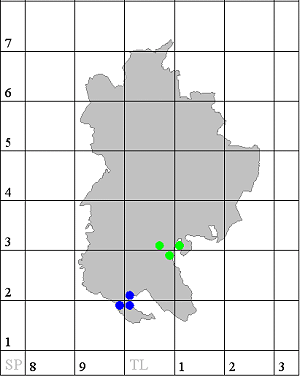

Six-spot Burnet Zygaena filipendulae (L.) ssp.
stephensi Dupont (169)
This is a common and widespread species in the county, the food plant is
Bird's-foot-trefoil. Take care to separate this species from the next one as
they are similar and need to be examined when they are at rest. The
characteristic papery pupal cases can be found on grass stems. There are notable
gaps in the map where the species probably is but has not been reported
especially in the east of the county. The flight period is July & August.
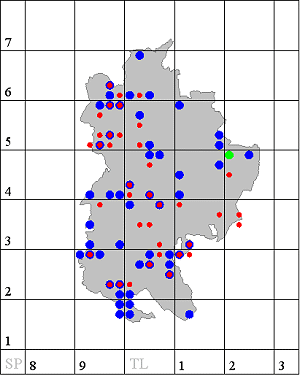
Narrow-bordered Five-spot Burnet Zygaena lonicera (Scheven
(171)
This is also common and widespread in the county and flies a bit earlier
in the summer than the previous species. Occasionally records of Five-spot
Burnet Zygaena trifolii are reported but this species is extinct in our
area and those records of it from the early to mid 20th century are most likely
mis-identifications. The food plants of this are clovers, trefoils & vetches. The
flight period is late June into July.

Emperor Moth Pavonia saturnia (L.) (1643)
The males fly by day over heathland and downs to find unmated females
who emit pheromones to attract them. The males can be seen flying over and
through the vegetation but are rarely seen this way. Most records are or larvae
or of males "assembled" to a virgin female. The flight period is late April into
May and the food plants in the county are usually heathers, brambles and
hawthorns. The photo is of a male, the female is larger and greyer. There is one
confusion species, that of Great Peacock Moth Saturnia pyri but there are
very few records of this European species in the country (including one in
Bedfordshire) and these may well have been escapes from captive bred stock. This
species is very much larger.
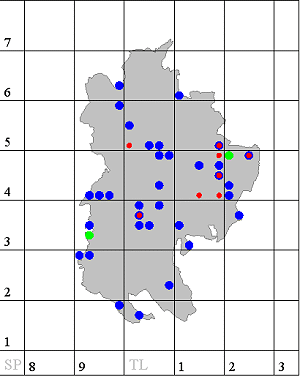
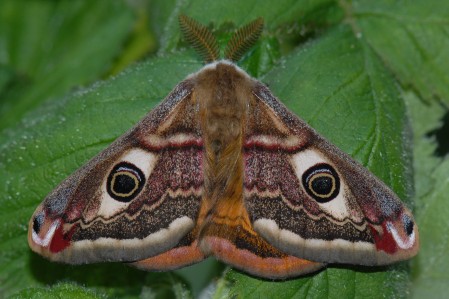
Orange Underwing Archiearis parthenias (L.) (1661)
This and the next species are very difficult to tell apart and in fact
the only absolutely reliable method is to net the moth and inspect the underside
of the hindwings (see Skinner, 1984). As the two species are food plant specific,
with this one feeding on Birch and the other on Aspen, if only one of the trees
is present then the species can be determined this way. If you are not sure then
record by the aggregate species no 1662x. The flight period is March & April and
the moths fly around the tops of Birches in sunshine sometimes coming down to
the ground in the late afternoon. Id needs checking with recorders.
Light Orange Underwing Archiearis notha (Hubner)
(1662)
The habits of this species are the same as the above except that it
flies around the tops of Aspen. The flight period tends to be a week or two
earlier than its partner. Id needs checking with recorders.
Chalk Carpet Scotopteryx bipunctaria ([Denis &
Schiffermuller]) ssp. cretata (Prout) (1731)
As would be expected all the records of this species are on the chalk
downland in the south of the county. Recent records are mainly from the areas of
exposed chalk in former quarries such as Totternhoe Knolls and Sundon Chalk Pit.
It may well be present at other sites with exposed chalk but these need
checking. It is a UK BAP species. The food plants are trefoils and clovers and
the flight period is Late July and early August. The recorders require to see a
photograph to confirm correct identification of this species.
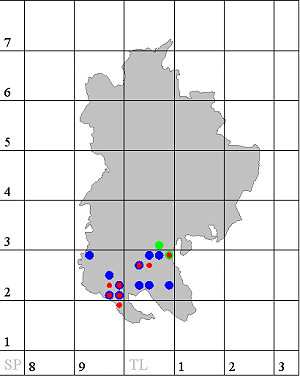

Chimney Sweeper Odezia atrata (L.) (1870)
This small black moth is found flying in the daytime in good areas of
unimproved grassland where its food plant, Pignut, grows. A closer inspection
will reveal the white outer edges on the wings. The flight period is June &
July.
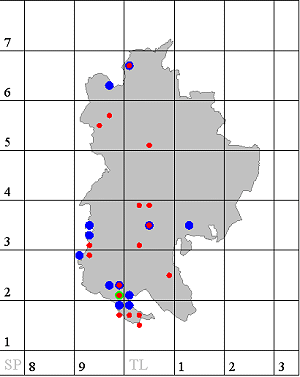
Latticed Heath Semiothisa clathrata clathrata (L.)
(1894)
This species is similar to the next but does fly by night as well as
day. Its range seems to have contracted in the last few years but this may just
be due to less records being sent in. formerly it was common throughout the
county but records in the last ten years or so are mainly from the north of the
county with two records from Haynes and a single record from the RIS trap at
Eaton Bray where it was formerly more common. Larval food plants are trefoils,
clovers and lucerne and the flight period is May to September. Photo by Keith
Balmer.
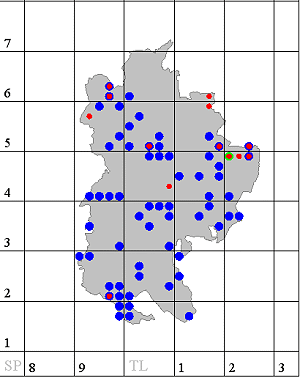
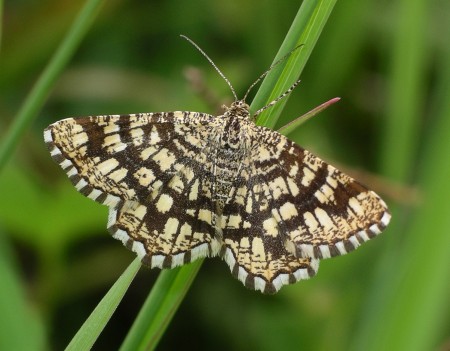
Common Heath Bupalus piniaria (L.) (1952)
Care needs to be taken to separate this from Latticed Heath above but a
good view will clinch the id. In Bedfordshire most records are from the chalk
downs in the south but it is also recorded from the Greensand ridge and also
woods in the north-west of the county. The flight period is May to early July
and the food plants are trefoils, clovers, heaths and heather. Photo by Mel
Lloyd.
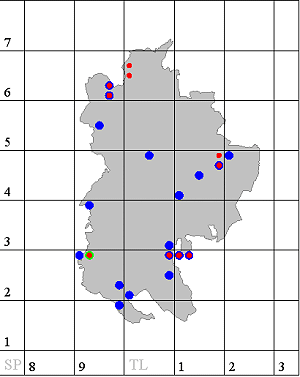
Humming-bird Hawk-moth Macroglossum stellatarum
(L.) (1984)
This species is the source of occasional reports to the RSPB of
hummingbirds reputedly seen nectaring from flowers in gardens. In most years
there are a handful of records but in a good migration year this can exceed 100.
The last good year was 2006 with 126 records. It is most often seen hovering in
front of flowers of buddleia, Red Valerian, Honeysuckle or Petunia though it has
also been seen at Lilac. Food plants of larvae are Hedge-bedstraw, Lady's
Bedstraw and Wild Madder and most records are in the summer from late July
onwards.
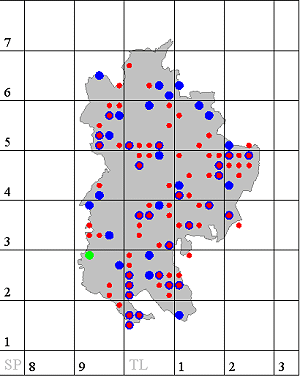
Wood Tiger Parasemia plantaginis plantaginis (L.)
(2056)
This species must now be extinct in the county as the last record was on
Bison Hill in 1982. However advertising this fact may turn up a new record - we
live in hope. The larvae are polyphagous on herbaceous plants and the flight
period is from May to July. If you do find it then please retain the specimen or
at least photograph it as evidence will be required. Photo by Keith Balmer.
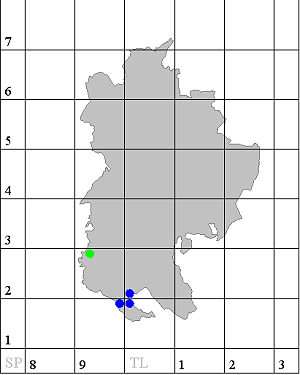
Cinnabar Tyria jacobaeae (L.) (2069)
Probably one of the day flying moth that most people know of as the
characteristic yellow and black ringed larvae on Ragwort are a s common as the
red and grey adults. There are however blanks in the distribution map especially
in the far north and north east of the county most likely due to poor observer
coverage. The food plants as mentioned already are Common Ragwort, Groundsel and
other Senecio spp. and the flight period is from May to July.
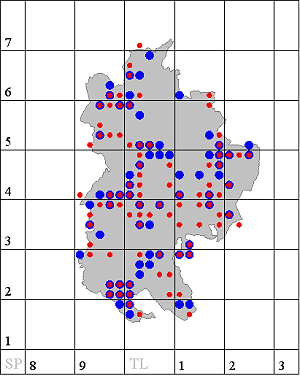
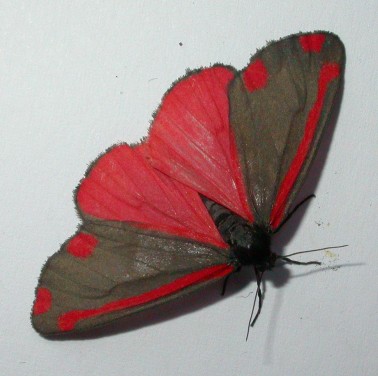
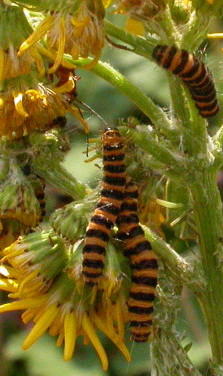
Silver Y Autographa gamma (L.) (2441)
This immigrant species is found all over the county and in a good year
like 2006 is abundant . It is often found in the daytime and especially
nectaring on garden flowers at dusk. It is polyphagous on herbaceous plants and
can be found at any time from spring to autumn though numbers are higher in the
summer and early autumn.
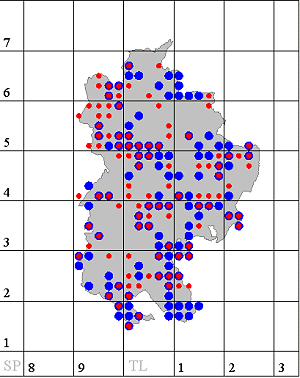
Mother Shipton Callistege mi (Clerck) (2462)
Once seen the markings of this moth are not forgotten, at least once you
notice the face of Mother Shipton (the 15th/16th century reputed prophetess and
soothsayer from Knaresborough in Yorkshire) on the wings. She was supposed to be
hideously ugly and her crooked nose and jutting chin are easy to see on the
moth. It is distributed generally across the county but there do seem to be fewer
records from the east. The food plants are clovers and it flies in May and June.
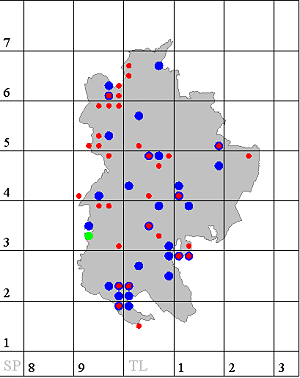
Burnet Companion Euclidia glyphica (L.)
(2463)
This species has a similar distribution to the previous species and
likewise there are fewer records from the east of the county. It feeds on
clovers and trefoils and flies between May and July.
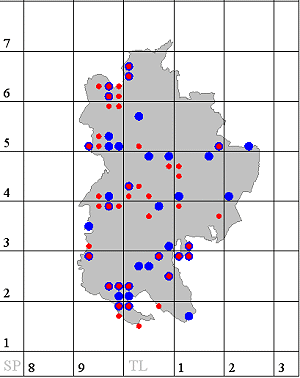

The Four-spotted Tyta luctuosa ([D&S]) (2465)
This is one of the rarer species in the county and indeed in the surrounding area. It is a BAP species and was formerly common along the railway line at Sharnbrook summit both sides of the county border with Northamptonshire. It is now confined to one small area in NW Bedfordshire near Odell and is recorded in low numbers most years though 2007 was a bumper year with 13 being recorded on one date in June. Its food plant is Field Bindweed and it flies in late May and June but the peak week seems to be about 10th to 20th June. It seems to have quite specialist habitat requirements and needs nectar sources like clovers as well as the food plant. If the grass is left too long and rank then the moth will disappear from a site. A good photograph will suffice for checking by the recorders but please notify us of a find asap so that we can check the site.
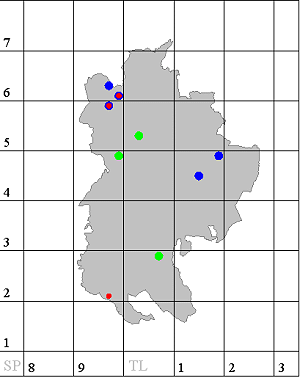

Small Purple-barred Phytometra viridaria (Clerck)
(2470)
The only records of this species are from the chalk downland in the
south of the county where it can be found singly or in small numbers. The
food plants are Common and Heath Milkwort and it flies in May, June and July.
Care needs to be taken to separate this species from similar micro moths such as
Pyraustra sp.
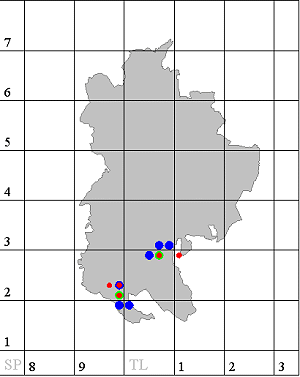
Species commonly disturbed during the day
Riband Wave Idaea aversata (L.) (1713)
This is a common species in the county and occasionally disturbed from
vegetation. The flight period is from May to September.
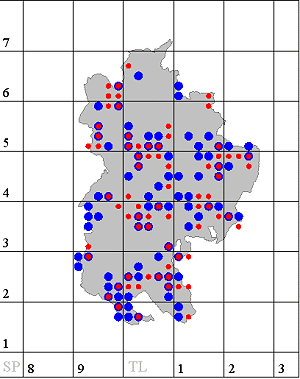

Silver-ground Carpet Xanthorhoe montanata montanata
([D&S]) (1727)
Commonly disturbed from vegetation this species flies between May and
August. Worn examples may appear very silver-grey and the brown bar may be
reduced in appearance.
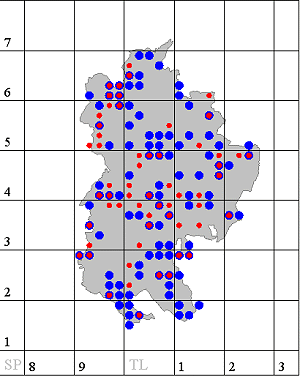
Garden Carpet Xanthorhoe fluctuata fluctuata (L.)
(1728)
This species can be very variable and the usual confusion is with Common
Carpet. It has a long flight period from May to October.
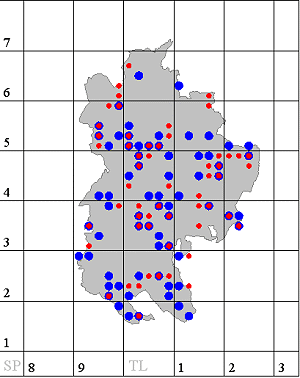

Shaded Broad-bar Scotopteryx chenopodiata (L.)
(1732)
This two toned brown moth is another one commonly disturbed from
grassland. It flies from May to October. Photo by Keith Balmer
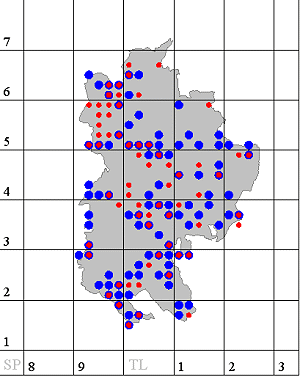
Common Carpet Epirrhoe alternata alternata (Muller)
(1738)
The usual confusion species here is Garden Carpet but this is sometimes
also mistaken for the rarer Wood Carpet as it is so variable. It flies from May
to September
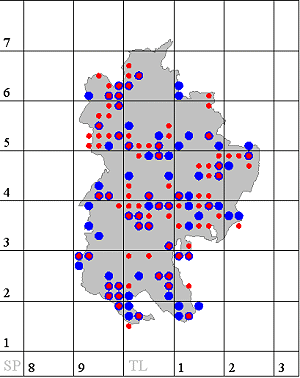
Yellow Shell Camptogramma bilineata bilineata (L.)
(1742)
This yellow moth is very common in grassland in the summer. It can be
quite variable in its colour but all have the same basic markings when seen
closely. It flies from May to September.
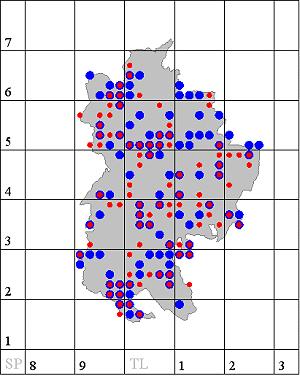
Last updated 21st May 2009